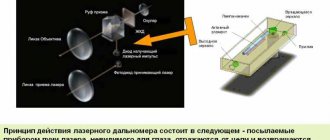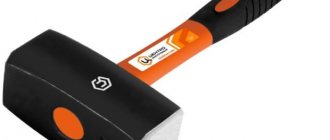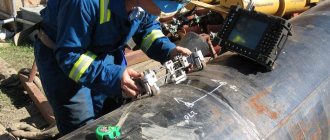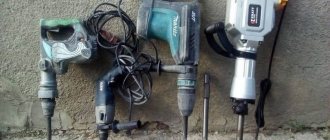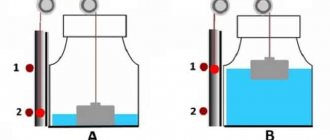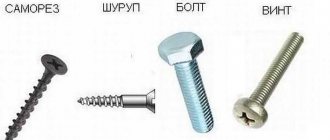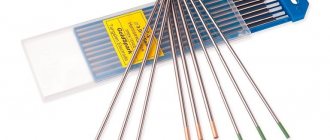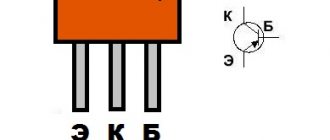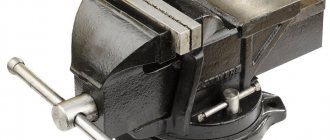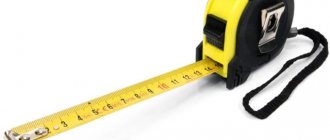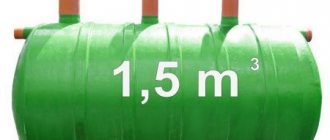Search business is an exciting activity that allows you not only to unwind your soul, but also to earn a little extra money. There is no way to do this without search equipment, especially a metal detector. After all, this device allows you to find the most unpredictable things made of metal. Let's figure out what a metal detector is and how it works.
This is what a metal detector looks like
Metal detector with electronic frequency meter
The operating principle of such a metal detector is based on an electronic frequency meter estimating the frequency of the measuring generator, when the sensor itself is still far from the target. The resulting value is “remembered” by the register. After which, in the process of searching for objects of interest, the electronic frequency meter continuously measures the frequency of the receiving generator. The reference frequency indicator is subtracted from the received data, and the result is displayed on the display screen.
Circuit diagram of a metal detector with an electronic frequency meter
Beat metal detector
The operating principle of a beat metal detector is based on the combination of the difference in frequencies emanating from two generators. One of these generators has a stable frequency, and the system of the second includes a sensor, which is an inductor. If metal objects are not located near the metal detector, the frequency values of the generators in the device are almost the same. The presence of metal near the sensor leads to a sharp change in the frequency of the generator.
Beat metal detector circuit
Registration of frequency differences can occur in a variety of ways. The simplest way is to listen to the signal using headphones or a loudspeaker. Digital methods for measuring frequency fluctuations are also often used.
Electrical and electromagnetic interference
They can wreak havoc on the operation of the device and often render it unusable. High-quality detectors differ from others in their ability to filter interference. Good metal detectors use highly effective noise suppression algorithms. The sources of interference are numerous. These include flickering fluorescent lamps, computer monitors, copy machines, and walkie-talkies. Ambient noise levels vary depending on the location of the metal detector frame. It is advisable to test the arch in the place where it will be installed.
Metal detectors with the “transmit-receive” operating principle
The operating principle of such a metal detector is to register a signal that is reflected from a metal object. The occurrence of a reflected signal is the result of the influence of a magnetic field with an alternating flux of the device coil on the target (metal object). At the same time, the structure of the device includes at least two coils, one of which is “responsible” for transmitting the signal, and the other for receiving it.
The operation of a “transmit-receive” metal detector is based on a certain mutual arrangement of coils, which eliminates the influence of one on the other. Thus, if there are no foreign metal objects, the transmitting coil induces a zero signal to the receiving system. The appearance of metal objects near the coils leads to the appearance of a special signal.
Types
Stationary metal detector frames can be single-zone or multi-zone. The latter can determine the approximate location of the target. For example, if a person walks through a metal detector with a concealed weapon positioned at their ankles, both the single-zone and multi-zone versions will detect it. The difference is that the multi-area variant can identify the location of a target on an individual's body.
The multi-zone frame uses a continuous wave multiple sensor technique rather than the conventional pulse induction method. This increases screening efficiency and reduces operating costs. Multiple detection zones allow you to pinpoint the exact location of a concealed weapon. In this case, the display shows whether the weapon is on the left, right or center of the body of the person being searched, and whether it is at the ankle, knee, waist, chest or at head height. If more than one metal object is hidden, each of them will be revealed with its location indicated. During a subsequent manual search, security personnel can immediately locate the object or objects that triggered the alarm.
An important feature of horizontal multi-zone technology is its ability to effectively distinguish between miniature pistols and harmless objects. People being searched can pass through the detector without having to remove keys and coins from their pockets. Weapons made from various grades of steel, aluminum, zinc alloys and mixed alloys are detected in a single pass.
The technology is resistant to electrical interference, thereby eliminating false signals that stop the flow of people. The equipment is active at all times, meaning that weapons and contraband will not be transferred or transferred unnoticed.
The price of the single-zone frame metal detector Garrett CS 5000 is $4495, and the multi-zone Garrett PD6500i is $5495.
Single Coil Induction Metal Detector
The sensor design of this device includes only one coil that monitors frequency changes. If a target appears close to the metal detector, a reflected signal occurs. In the coil it is “guided” by an additional electrical signal. The operator will only need to isolate this signal. The reflected signal can be registered by calculating from the electrical indicator present in the coil a signal of a similar phase, frequency, amplitude, which was observed in the absence of metal nearby.
In general, a single coil induction metal detector combines the characteristics of devices operating on a beat with devices of the “transmission-reception” principle. Thus, a single coil metal detector is characterized by high sensitivity and simplicity of design.
Principle of operation
The simplest form of metal detector is an alternator and coil. The current passing through the latter creates an alternating magnetic field. If an electrically conductive metal appears near the coil, then eddy currents are induced in it, creating its own magnetic field.
The biggest technical change in detectors was the development of the induction balance system. It consists of two electrically balanced coils. When metal is nearby, the balance disappears. Detectors can detect different metals because they exhibit different phase-frequency properties when exposed to alternating current.
Pulse metal detector
A pulse metal detector is characterized by high sensitivity and can be used to search for various objects even at great depths. The operation of such a metal detector is based on the time method of separating emission and reflection signals. This method is very often used in echo and pulsed radar.
The pulse generator generates short-term current pulses, which subsequently enter the emitting coil. Here they are already converted into magnetic induction pulses. Since the pulse generator, i.e. The emitting coil is inductive in nature; “overloads” occur at pulse fronts in the form of voltage drops. These bursts can reach amplitudes of tens or even hundreds of volts. However, it is still better not to use protective limiters, because The front of the pulse current and magnetic induction may be delayed. As a result, the process of separating a reflective type signal will become more difficult.
Pulse metal detector circuit
It should be noted that the emitting and receiving coils can be located in a completely arbitrary order. This is due to the fact that the penetration of the emitted signal and the influence of the reflected signal on the coil are spaced over certain time intervals. In addition, the same coil can perform any of the roles: both receive a signal and reflect it.
Description of the operation schemes of PI and VLF metal detectors
The decay time of this electrical pulse depends on the magnitude of the electrical resistance of the coil with the wire. A complete absence of resistance, or, on the contrary, a very high value of it, will cause the impulse to fluctuate. It's like throwing a rubber ball onto a very hard surface and having it bounce off multiple times before finally settling down. With sufficient electrical resistance, the pulse decay time is shortened and the reflected pulse is “smoothed out.” This is similar to throwing a rubber ball at a pillow. A pulse induction detector coil is said to be critically damped when the reflected pulse quickly decays to zero without oscillation. Excessive or insufficient suppression will introduce instability and mask signals from highly conductive metals such as gold and reduce detection depth. When a metal object is close to the search coil, it stores some of the pulse energy, which leads to a delay in the process of attenuation of this pulse to zero. The change in the width of the reflected pulse is measured and signals the presence of a metallic object. In order to isolate the signal of such an object, we must measure that part of the pulse where it decreases to zero (tail). At the input of the coil receiver there is a resistor and a limiting diode circuit, which cut the input pulse voltage to 1 volt so as not to overload the circuit input. The signal at the receiver consists of a pulse from the transmitter and a reflected pulse. Typically the receiver gain is 60 decibels. This means that the area where the reflected signal drops to zero can be increased by a factor of 1000.Gate circuit. The amplified signal from the receiver enters a circuit that measures the time the voltage drops to zero. The reflected pulse is converted into a train of pulses. When a metal object approaches the coil, the shape of the transmitter pulse will not change, but the reflected pulse will become slightly longer. Increasing the duration of the pulse tail by just a few millionths of a second (microsecond) is enough to determine the presence of metal under the coil. Pulses (strobes) synchronized with the beginning of the transmitter pulse are superimposed on this reflected pulse, and at the output of the electronic circuit a series of strobes is obtained, the number of which is proportional to the length of the “tail” of the pulse. The most sensitive pulse is located as close as possible to the end of the tail, where the voltage is very close to zero. Typically this is a time domain of about 20 microseconds after the transmitter is turned off and the reflected pulse begins. Unfortunately, this is also an area where the operation of a pulsed induction metal detector becomes unstable. For this reason, most models of pulse induction metal detectors continue to produce gate pulses for another 30-40 microseconds after the reflected pulse has completely decayed.
Integrator. Next, the gated signal must be converted to DC voltage. This is accomplished by an integrator circuit that averages the sequence of pulses and converts them into a corresponding voltage, which increases when the object is close to the frame and decreases when the object moves away. The voltage is further amplified and drives the audio control circuit. The period of time during which the integrator collects incoming gates is called the integrator time constant (TI). It determines how quickly the metal detector responds to a metal object. A long PVI (on the order of seconds) has the advantage of reducing noise and simplifying detector tuning, but it also requires very slow movement of the search coil, since the object may be missed if it moves quickly. A short PVI (on the order of tenths of a second) reacts faster to the target, which allows you to move the coil faster, but noise immunity and operational stability deteriorate. DISCRIMINATION (recognition). Pulse induction metal detectors are not capable of the same degree of discrimination as VLF devices. By measuring the increasing period of time between the end of the transmitter pulse and the point at which the reflected pulse dissipates to zero (delay time), objects composed of certain metals can be filtered out. In terms of this characteristic, aluminum foil comes first, followed by small nickel coins, buttons and gold. Some coins can be identified from a very long pulse tail, however the iron is NOT identified in this way. Many attempts have been made to create a pulse induction metal detector capable of detecting iron, but all these attempts have had very limited success. Although iron has a long tail, silver and copper have the same characteristics. Such a long delay has a bad effect on determining the depth. The mineral content of the soil will also lengthen the reflected pulse, changing the point at which an object is detected or rejected. If the integrator time constant is adjusted so that the golden ring is not detected in the air, the same ring can “glow” in soil saturated with salts. Thus, salt-saturated soil changes everything about the dwell time and selectivity of a pulsed induction metal detector. DEVELOPMENT FROM THE GROUND. Ground offset is very critical for VLF devices, but not for pulse induction metal detectors. On average, the soil does not store any significant amount of energy from the search coil and usually does not produce any signal itself. The soil will not mask the signal from the object and, on the contrary, soil mineralization slightly lengthens the signal in proportion to the increase in the depth of the object. In relation to MDs with pulse induction, the term “automatic ground balance” is often used; they usually do not react to excessive soil mineralization and do not require external adjustment for different soil types. The exception is one of the most unpleasant soil components - magnetite (Fe3O4), or magnetic iron oxide. It overloads the input coils of VLF type detectors, greatly reducing their sensitivity; pulse induction metal detectors will work, but may show false targets if the coil is brought too close to the ground. You can minimize this detrimental effect by lengthening the delay between the end of the transmitter pulse and the start of gating. By adjusting this time constant, you can tune out interference caused by soil mineralization. AUTOMATIC AND MANUAL SETUP. Most pulse induction metal detectors have manual settings. This means that the operator must turn the setting until a clicking or itching sound is heard in the headphones. If the soil in the search area varies from and to neutral sand or from dry soil to seawater, then adjustments are necessary. If you don't do this, you may lose detection depth and miss some objects. Manual tuning is very difficult when using a short integrator time constant (TITC). Therefore, many manually tuned instruments have a long PIR and require the search coil to be moved slowly. There are no problems with using pulse induction MD for underwater searching because it does not move the search coil quickly. When used in the surf, the coil will be either in the water or under the water, and in such conditions, using devices with manual settings can be very disappointing, since you will have to constantly adjust the response threshold. In this case, some operators immediately set the device just below the response threshold. But this can lead to a decrease in detection depth when soil characteristics change. Automatic adjustment (SAT-self adjusting Threshold) gives a significant advantage when searching in and over salt water or soil with high salt content. It allows you to use the detector at maximum sensitivity without constant adjustment. This improves operating stability, noise immunity and allows the use of higher gain. Pulse induction MDs do not emit strong negative signals like VLF devices. Therefore, they do not go off scale on pits with minerals. It is necessary to continuously move the coil of a metal detector equipped with an auto-tuning system; if you stop the coil, the setting is lost or the device stops responding. Audio control. Pulse induction MD audio signaling circuits fall into two categories: variable frequency and variable volume. Variable-frequency circuits based on a voltage-controlled oscillator are good for recording small objects, since changes in frequency are easier to detect by ear than changes in volume, especially at low volume levels, especially for instruments with manual threshold adjustment. However, the sound of a fire siren quickly becomes tiresome, and some people are unable to distinguish high-pitched tones. One good option is mechanical vibration, which was originally used for underwater vehicles. Such a device produces sounds and vibration, which increases to a buzzing sound when an object is detected. The signals from such a mechanical device are easy to recognize and are not drowned out by the air supply system. Many people prefer a more traditional audio tone with increasing volume rather than frequency. Such sound control systems work well in devices with fast frame movement, those in devices with automatic adjustment, and they sound similar to devices with VLF. Conclusions on MD with pulse induction. These are specialized tools. They are of little use for searching for coins in urban environments, since they cannot filter out iron and ferrocontaining debris. They can be used for archaeological searches in rural areas where there is no iron debris in large quantities, searching for gold nuggets and for searching at maximum depth in extreme conditions, such as sea coasts or places where the ground is highly mineralized. Such metal detectors show excellent results in such conditions and are generally comparable to VLF devices, especially in their ability to tune out such soils and “pierce” them to the maximum depth.
Magnetometers
Magnetometers are devices whose purpose is to change the magnetic field. At the same time, magnetometers can also be used as metal detectors. This is possible due to the fact that the Earth's magnetic field can be distorted by various materials with ferromagnetic properties, such as iron. Detection of such objects occurs by recording deviations from the initial magnetic field module for a certain area. As a result, you can observe some magnetic inhomogeneity (anomalies), which can be caused by metal objects.
Unlike the metal detectors discussed above, magnetometers cover a larger detection range of iron objects. Probably, many have heard about using a magnetometer to locate, for example, a car located at a distance of 10 meters from the operator. At the same time, the main disadvantage of magnetometers is their inability to detect objects made of non-ferrous metals. In addition, the magnetometer can respond not only to iron, but also to so-called natural magnetic anomalies. These could be, for example, mineral deposits or individual minerals, etc.
Magnetometer circuit
Other applications
Most frame metal detector installations have phase-sensitive detection circuits, which allow sensitivity to be increased for a certain group of metals and decreased for others. They are designed to search for both ferrous and non-ferrous metals. Systems with higher sensitivity can be used to protect against theft in jewelry manufacturing departments. There are frames specifically designed to detect small items such as disposable blades and blade pieces, shivs, handcuff keys, detonators, jewelry, coins, microprocessors and memory chips. The use of such detectors improves security in prisons by effectively detecting small objects that could be used as weapons, even if they are hidden in body cavities. Frames are also used in manufacturing and trade to protect small but valuable goods.
Radars
The operating principle of any radar is based on the method of studying electromagnetic energy, its reflection and reception from various objects in the air, on the sea or on the ground. The reflected signal is received for further processing and analysis. As a result, you can accurately determine the location of the object of interest, its speed and trajectory.
Radars have a number of undeniable advantages. So, they allow you to work over fairly large distances. The signal that was reflected can be considered such that it completely obeys the laws of geometric optics, and its attenuation is proportional only to the second power of the distance. At the same time, a serious disadvantage of the radar is that by emitting electromagnetic waves, it allows you to detect your location. However, now an intensive search is being carried out for methods that help hide radar signatures, and it is quite possible that it will soon be possible to get rid of this drawback.
We also recommend that you familiarize yourself with the Tube-semiconductor UMZCH.
Consistent performance
It is important to select a detector that provides the same result throughout the monitored area. A poorly designed frame will not perform linearly. Different areas of the detection field may contain both highly sensitive spots and areas of low sensitivity, known as dead spots. In this case, the signal from the same metal object will change when moving through different sectors of the opening.
